Types of Hearing Aids
After having a hearing evaluation, your audiologist may recommend a prescription hearing aid for you. Your audiologist will take your lifestyle and personal goals into consideration and will guide you to the most suitable choice and hearing aid style.
Prescription hearing aid styles and technology can be confusing, even if you have been wearing hearing aids for years. Please keep in mind that our job is to guide you through this selection process, so be sure to ask questions and take notes as you weigh your options. Prescription hearing aids are an important investment in your health and well-being.
A common misconception is that a specific prescription hearing aid technology can be purchased only in certain styles. The technology refers to the computer chip and signal processing that you are purchasing. The style refers to the type of case that houses the technology. That means the smallest style isn’t necessarily the most expensive or the best.
The Most Common Hearing Aid Styles
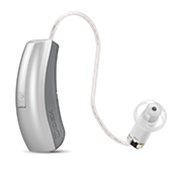

Receiver-in-Canal Aids
These aids look similar to the behind-the-ear hearing aid with a unique difference — the speaker of the hearing aid is placed inside the ear canal, and a thin wire replaces the acoustic tube of the BTE aid. These aids also offer cosmetic and listening advantages for many adults. These can be utilized as open-fit technology or more closed when more power is required.
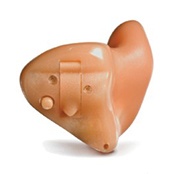

In-the-Ear (ITE) Aids
All parts of the ITE aid are contained in a shell that fits in the outer part of the ear canal. These aids are larger than completely-in-the-canal aids and, for some people, may be easier to handle than smaller deep-fitting hearing aids. Prescription in-the-ear hearing aids utilize custom made-to-fit shells.
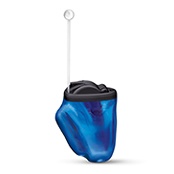

Invisible-in-Canal (IIC) and Completely-in-the-Canal (CIC) Aids
These aids are contained in a tiny case that is custom fit partly or completely in the ear canal. They are the smallest aids available and offer some cosmetic advantages. Our audiologists can determine if you are a good candidate for invisible-in-canal or completely-in-the-canal technology and further discuss their pros and cons. Prescription in-the-ear hearing aids utilize custom made-to-fit shells.


Behind-the-Ear Open-Fit
Open-fit technology keeps the ears open to sound, rather than plugging up the ear with the hearing aid. The frequencies that you don’t need amplified travel normally through the ear canal, remaining natural and comfortable, while the frequencies at which you have hearing loss are amplified. With an open fitting, sounds at the eardrum arrive directly from both the open ear and the hearing instrument.
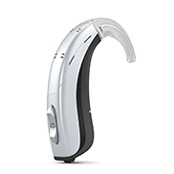

Behind-the-Ear (BTE) Aids
All electronic parts of the BTE aid are contained in a small plastic case that rests behind the ear. The case is connected to an earmold by a piece of clear tubing. These types of hearing aids provide the most amplification for a full range of hearing needs, including for the most severe hearing loss.
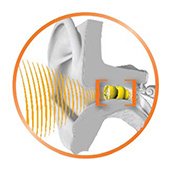

Lyric Extended-Wear Hearing Aids
These hearing aids fit deep in the ear canal, and are designed to be worn continuously, 24 hours a day, seven days a week, for several weeks at a time. You can wear these devices during daily activities, like exercising, showering, talking on the phone, and sleeping. These hearing aids are purchased on a yearly subscription basis. The audiologist replaces the devices in the clinic approximately every 60 days. This removes the need to change batteries and perform daily maintenance. The ideal extended-wear candidate is an individual with mild-to-moderate hearing loss who enjoys an active lifestyle. Our audiologists can determine whether you are a good candidate for extended-wear hearing aids. Two of our clinics are authorized dispensers of this highly specialized technology.



